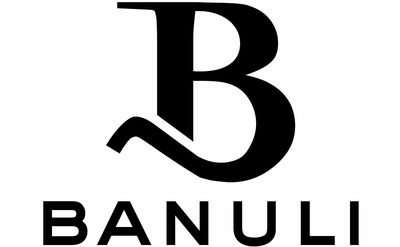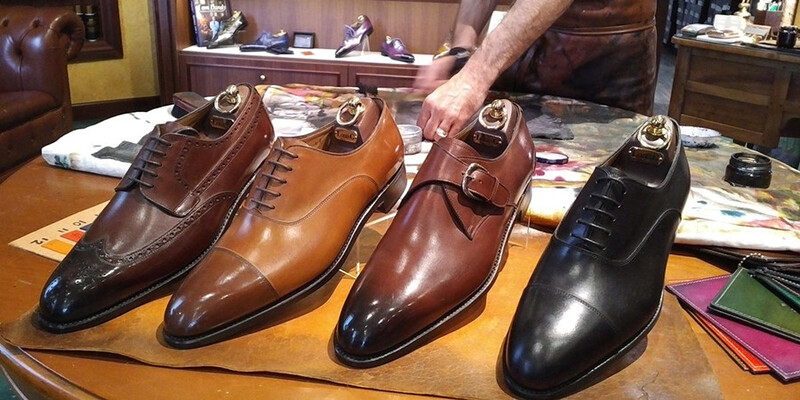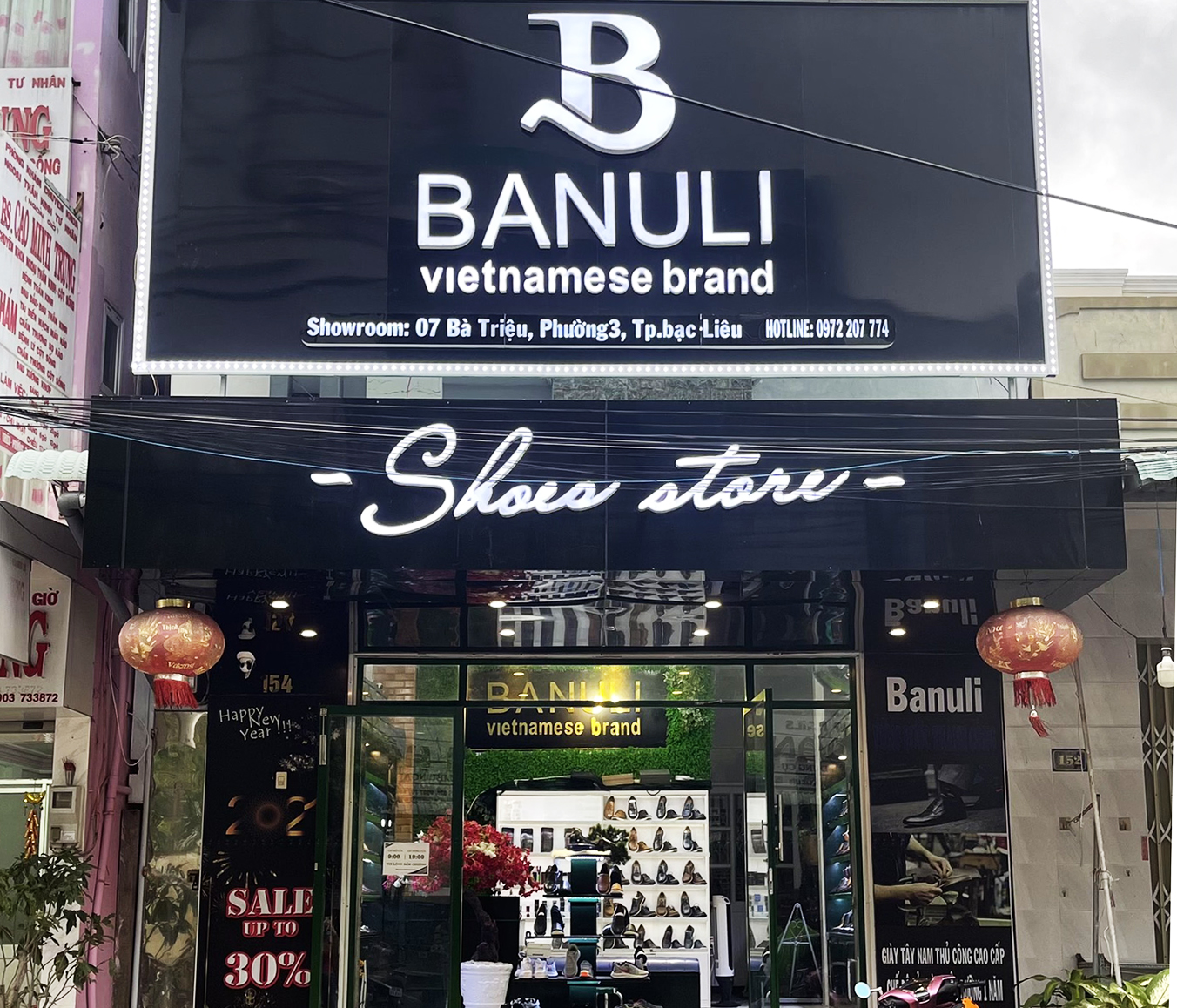DRESS SHOES – HOW TO DIFFERENTIATE TYPES OF SHOES
In the movie Kingsman, the young Eggsy has entered the world of high-level spy and adept spies with the password: 'Oxford not Brogues.' Not just a mouthpiece, this seems to be the basic principle. Must know to dress up like a gentleman.
And director Matthew Vaugh was also very delicate when it was inserted after a short spell by the Galahad masters to explain that to his apprentice.
Not only in Vietnam, but in the United Kingdom, known for its master craftsmanship, many are confused and difficult to distinguish between Oxford and Brogues, Derby or Blucher.
After a period of research and use, this article will share an overview of men's shoes.

DESIGNS
Oxford
Corded poles can be divided into two types: Oxford and Derby. They both have in common and have the front vamp (shoes) body attached to the quarters, low heel and closed by Goodyear welt technology.
With Oxford shoes, the string holes are placed under the vamp (the front of the shoes). This type of shoe is sometimes called "closed front", because the front of the shoe is always closed together with lanyards.
The Derby (sometimes called the Gibson type) is a shoe string, which is attached to the upper part of the vamp. This type of shoe is also known as "open front".
In addition, one detail distinguishes two types of shoes, in Oxford, the upper skin is sewn or sewn onto the lower body, giving a sense of dignity, while in Derby the opposite.

Oxford is a shoe for formal occasions. But now more and more innovative models help Oxford users to combine both formal and casual styles. One of the assumptions about the birth of Oxford is that it was re-created from classic shoes by students at the University of Oxford who tended to resist wearing shoes.
Another explanation is that the Oxford style shoe comes from Scotland, where it is called "Balmoral," which stands for a castle. So in America, these shoes are still called Balmoral. Today, the British call this shoes Oxford, while the Americans still call it Balmoral (or Bal).
Oxford is used when the shoes have a flat nose. However, the tip of the shoe and other parts may be decorated by hole patterns - known as "semi-brogue" or "London brogue". Or, shoes may have round noses, with more detailed hole patterns, called "full brogues."
Derby
Derby shoes were born in the 1850's and were used for hunting or playing sports. Going into the industrialization of the 20th century, before the strong competition of professional sports equipment Adidas, Asics, Nike ... Derby shoes are no longer the type of shoes used in sporting events anymore .
Today Derby is seen as a polite shoe, used by the public but not as rigid and as formal as the Oxfords, with a wider shoe, which is easier to adjust for tight laces. , Can fit more leg style.
Bluchers
Blucher was the name of Prussian general Gebhard Leberecht von Blücher in the 18th century. He improved a boot into a shoe with extra leather in the front to protect the leg. Later, this shoe was used in most European military barracks. At first glance, Blucher is quite like Derby on the open shoe.
But if you look closely, you will find for Derby, the body consists of two separate pieces of skin are sewed on the skin of the front body, while Blucher, the front and back of the skin is a piece, and the tail is grafted by 2 small pieces of skin above.

Brogue
Brogue is a very familiar and popular shoe, not just for men but for women. In fact, a brogue is a way to call a shoe style. So, there are many types of brogue shoes, it can be a loafer, boots or boots.
All shoes adorned with openings on the surface are called brogues. This shoe comes from Scotland and Ireland, which function as a drainage hole when entering the marsh. Thus, in the early 20th century, this shoe was only used for outdoor activities and in the countryside.
Gradually, Brogues appear more under the rich designs and materials. Not only out of the countryside, they also become a popular shoe in the office or luxury parties. And, of course, the punch hole is only decorative function only.
Monk Strap
Monk Strap is a shoe that originated from the European monks in the Alps, in an effort to find alternatives to classic sandals. Monks Strap has no straps; Instead, this type has a layer of skin across the shoe's nose and a buckle. Today Monk Strap is seen as a type of shoe that can replace stilts for formal occasions.
The shoe style with a buckle on the side of the hip is considered to be an immortal and must-have shoe for men (you can try a pair of chocolate suede), while the two-tone design inspires the military. Monk strap is also the favorite shoes on the catwalk this year.
Loafer
Unlike its popular name (Loafers), Loafers does not offer a sloppy and sloppy style, even if it is more comfortable than stilettos. Its origins are presumably from King George VI, who wanted to create a type of indoor shoe for his private residence in 1926.
The base is low and no strings, it has a slightly raised design like moccasin and usually has a piece of leather on top of the saddle. The identities between the Loafers and the Moccasin are not much detail on the hood and on the soles. Classic loafers include Penny, Tassel, and Gucci. This section will be covered in detail in another article.
Chukka
The name for high-heeled boots, the hull is made up of two pieces of leather and has two or three piercing holes. Chukka shoes are traditional goatskin shoes, but a pair of suede or black goatskin suits are also suitable for occasional occasions.
Traditionally, shoe soles are made of leather, but today they can be made of crepe base, rubber sole. The Crepe Empire was first introduced by Nathan Clark after he saw soldiers wearing desert boots during a trip to Burma in 1941. You can choose brown or tan chukka, and do not mix crepe chukka with suit.

Chelsea Boot
Chelsea boots are short-sleeved boots to the ankles and legs. This type of boots was designed in the Victorian era, originally intended for riding. The identities of these boots are elastic on both sides, running from the ankle back down. This elasticity will make it easier for you to wear shoes, rather than using a zipper.
Chelsea boots were especially popular in the 60s, because they were the favorite shoes of The Beatles and The Stones. They are also an indispensable accessory for characters in Star Wars.
Shoes are infinite charm with time is a special mark if you want to own classic irresistible masculine beauty. Not only that, you can style almost any style with this shoe style. Whether you invest in a pair of Saint Laurent or John Lobb, you can easily mix it with suits made from Savile Row or jeans and leather jackets.
DETAIL
Plain Toe: Simplicity often comes with elegance. Typical examples are the most formal shoes, whether Oxford, Derby or Chealsea, with none of the above motifs.
Cap Toe: The extra leather on the tip of the shoe makes the shoes look better - especially in a pair of Derby. The cap toe at Oxford is also solemn, but is often used only by wealthy businessmen.

Whole Cut: The body of the shoe is made from a single piece of leather, creating a special elegance that makes you love at first sight.
Round Toe: Indicates the rounded nose of the shoes.
Chisel Toe: The square shoes, but slightly tapered at the sides.
Wingtips: This is the most common type of brogue. If you are standing in the opposite position of the person wearing the shoe, you will see the W design as the bird wingspan.
The perforated W will run almost 2/3 of the body of the shoe forward, extending from side to side. The perforations not only appear on the shoes, but also on the periphery of the shoe, along with jagged edges.
Semi-brogues (Semi brochures): The semi-brogue looks more polished than the full brogue, first appearing in 1937 on an oxford boot from a shoe maker in the UK.

This is a shoe-shaped shoe rather than a W covering the front surface. The ridge section remains intact through the perforations.
Full Brogue: A combination of classic semi-brogue and wingtip. In addition, the full brogue is divided into two categories. One is the "austerity brogue", a simple W-shaped bezel without perforated decor, suitable for simplicity and serious requirements. The maximum.

In the meantime, the only type of perforation without a serrated ridge is called a "blind brogue".
Quarter brogue: Similar to semi-brogue and simpler, this shoe is only decorated at the tip of the shoes, but will not have a punch in the center of the shoes.
Longwing brogues: This shoe has a perforated line that surrounds the entire body of the shoes. In addition, the base is usually quite thick.
Although quite popular in the 1970s, they are no longer popular.
Now men are more confident in distinguishing the type of dress shoes to suit their hobbies and personality then. The stop here, part 2 will address other information such as the leather sole and shoe-making techniques.








